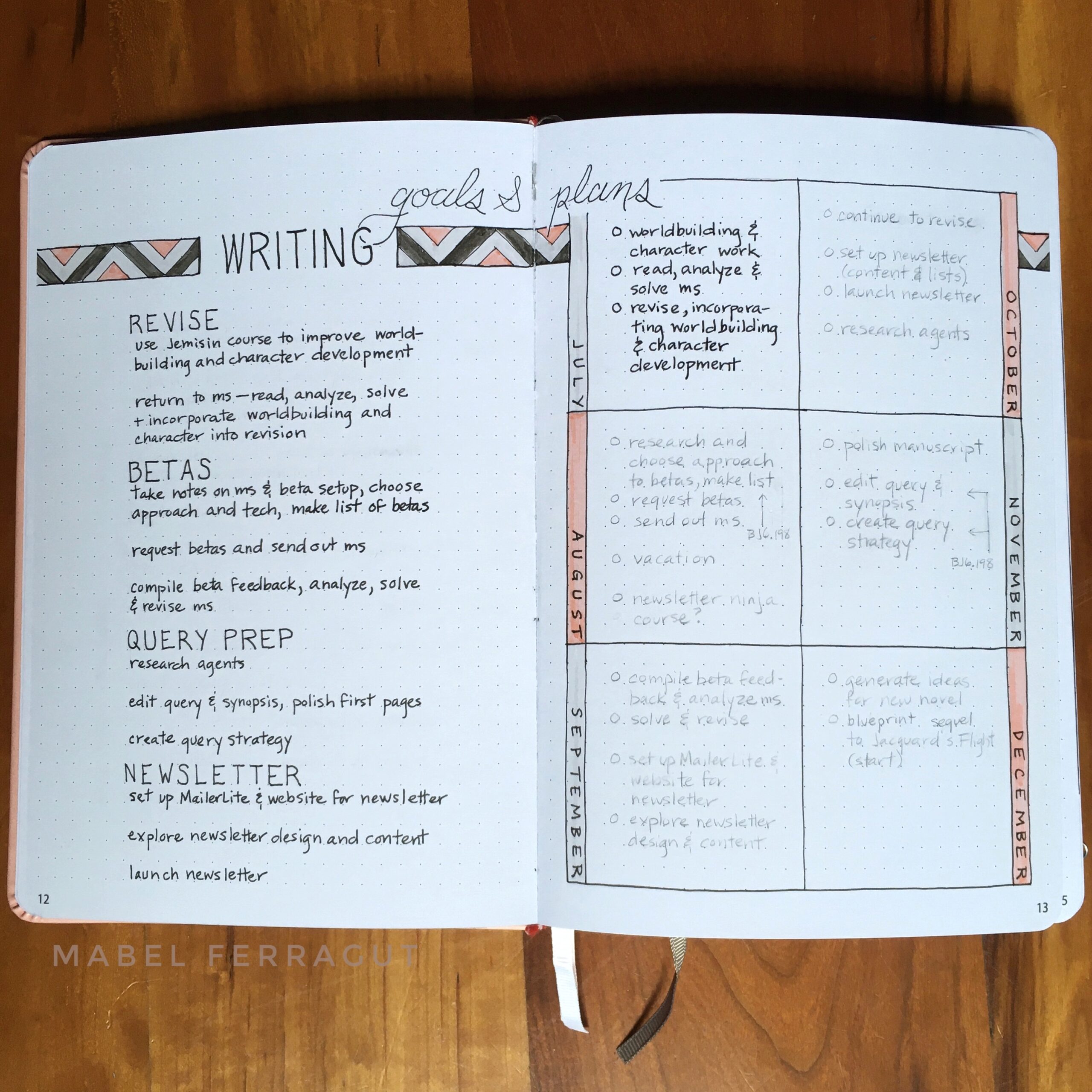Writing a novel is complicated. I definitely underestimated how complicated it would be when I first dove into NaNoWriMo (National Novel Writing Month) after jotting down a few scene ideas. Since that first attempt, I’ve been learning how to actually write a novel.
There’s no clear answer, no manual you can follow that will lead you step-by-step through your process. I’ve read dozens of craft books, watched more videos than I’d like to admit, and experimented with many techniques. All of them have contributed to my understanding of how I should write my novel, and I’m grateful to every writer who has shared their experience and wisdom. But in the end the only way to write a novel is to find and trust your own process. Roxane Gay nailed it when she said, “This is your novel and only you know how to write it.”
Which is why my bullet journal (bujo) has been so instrumental in the evolution of my writing process. It’s given me a chance to experiment with different techniques for organizing my writing life. Here’s the evolution of my writing spreads.
First Stab
Sep – Dec 2018
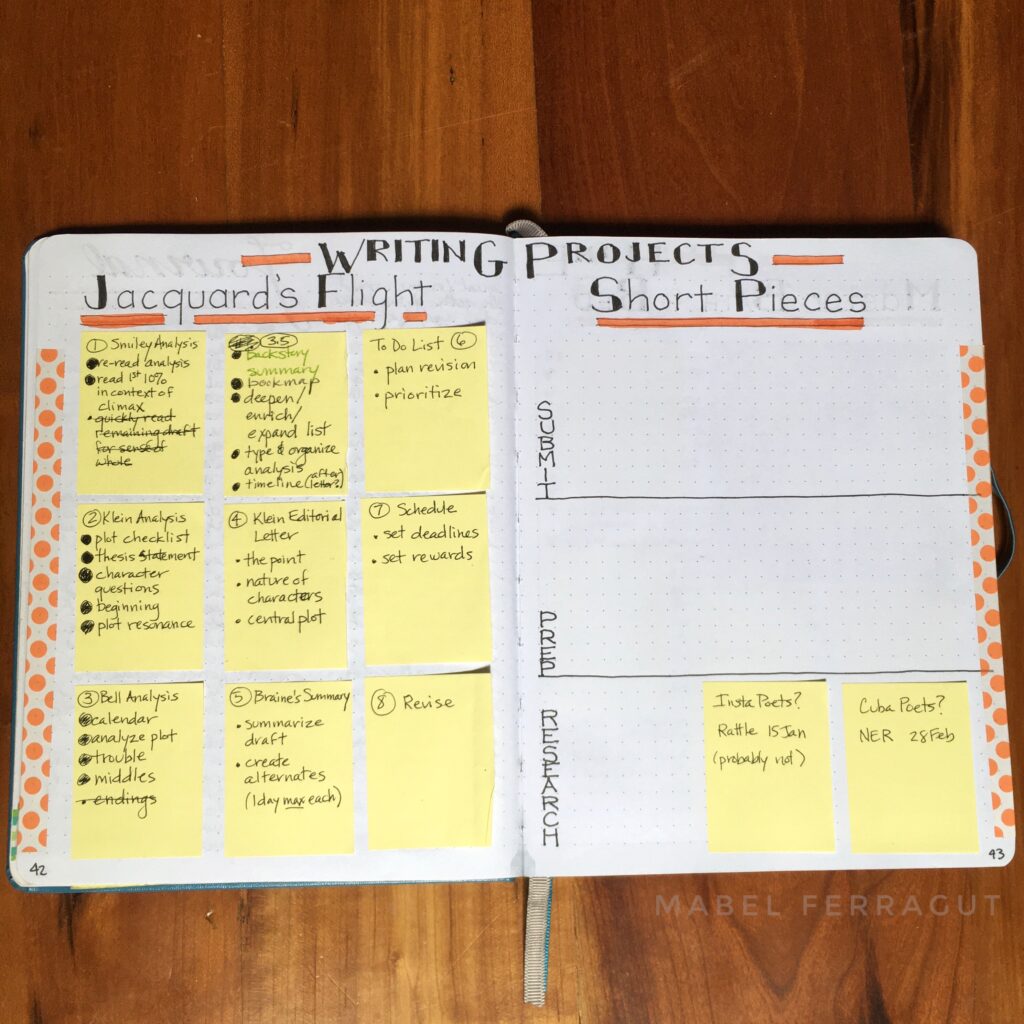
My first writing spread was inspired by this video from M.M. Chouinard. She creates a mini Kanban board in her journal to keep track of her writing projects, and their stages. I loved the idea. I wanted to be a writer with multiple projects at different stages of development.
But I’m not, so her spread didn’t work for me. My slow learning pace didn’t move through stages fast enough to make the board satisfying or even necessary. Also, since I’m focused on only one project (my novel) keeping track of its overall progress is just not an issue—it’s the micro-progress I’m more concerned with. Another thing I learned is that I like having a permanent record of what I’ve done. The post-its don’t give me the feeling of accomplishment I’m looking for.
Comprehensive Approach
Jan – Jun 2019
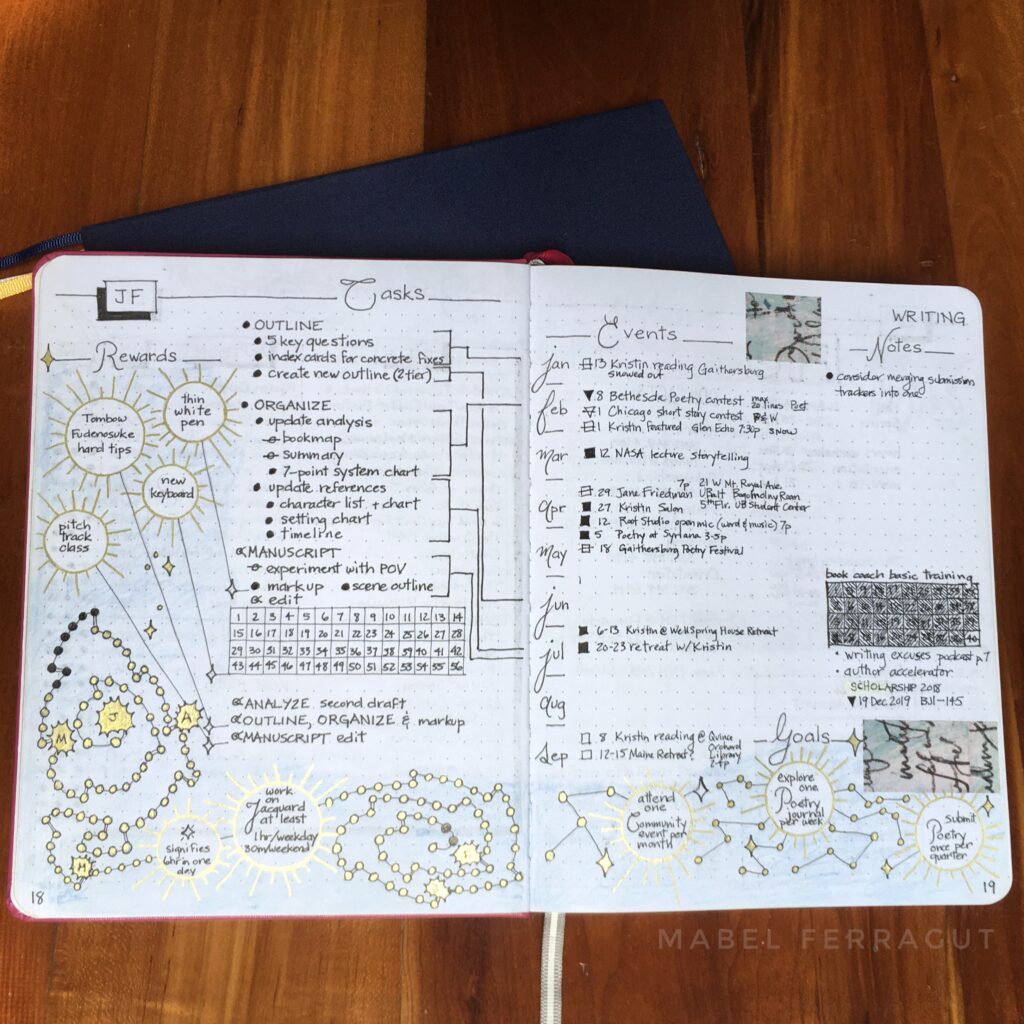
This time I put all aspects of my writing life in one spread, from goals to trackers to classes and events. I set a goal of writing at least one hour each weekday, and half an hour each weekend. It was fun filling out the constellations of circles in gold. This tracker helped me establish and maintain a regular writing practice.
The task list was more frustrating than helpful. At this point I had completed a draft of my novel, but I had never edited a novel before. My plans were mostly guesses, and they kept changing, as did the timeline. The spread couldn’t really accommodate this uncertainty.
Tracking and Inspiration
Jul – Dec 2019
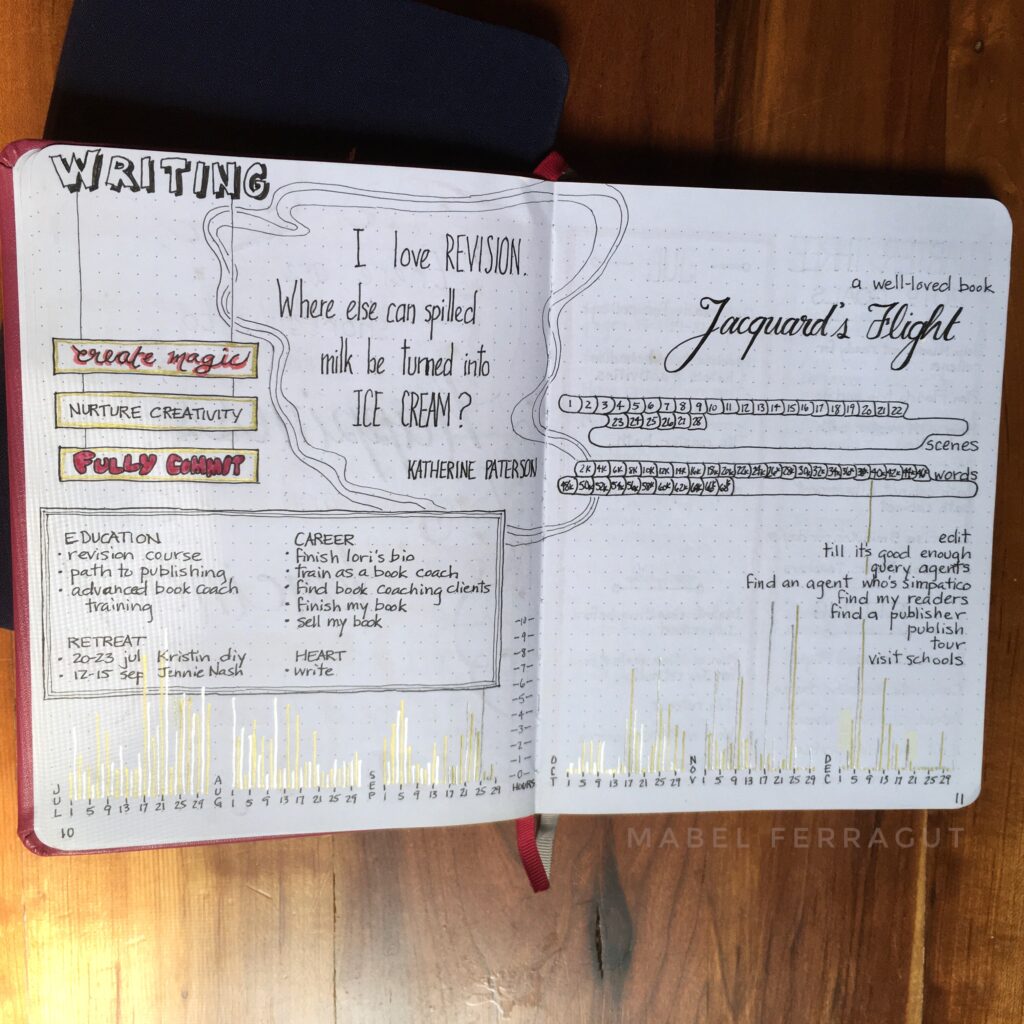
In this spread I included one of my favorite quotes, as well as trackers for hours spent writing, scenes completed, and words written. I was experimenting with which tracking method would be most meaningful for me. I’m discovering that this depends on the stage of writing that I’m in.
Cryptic
Jan – Jun 2020
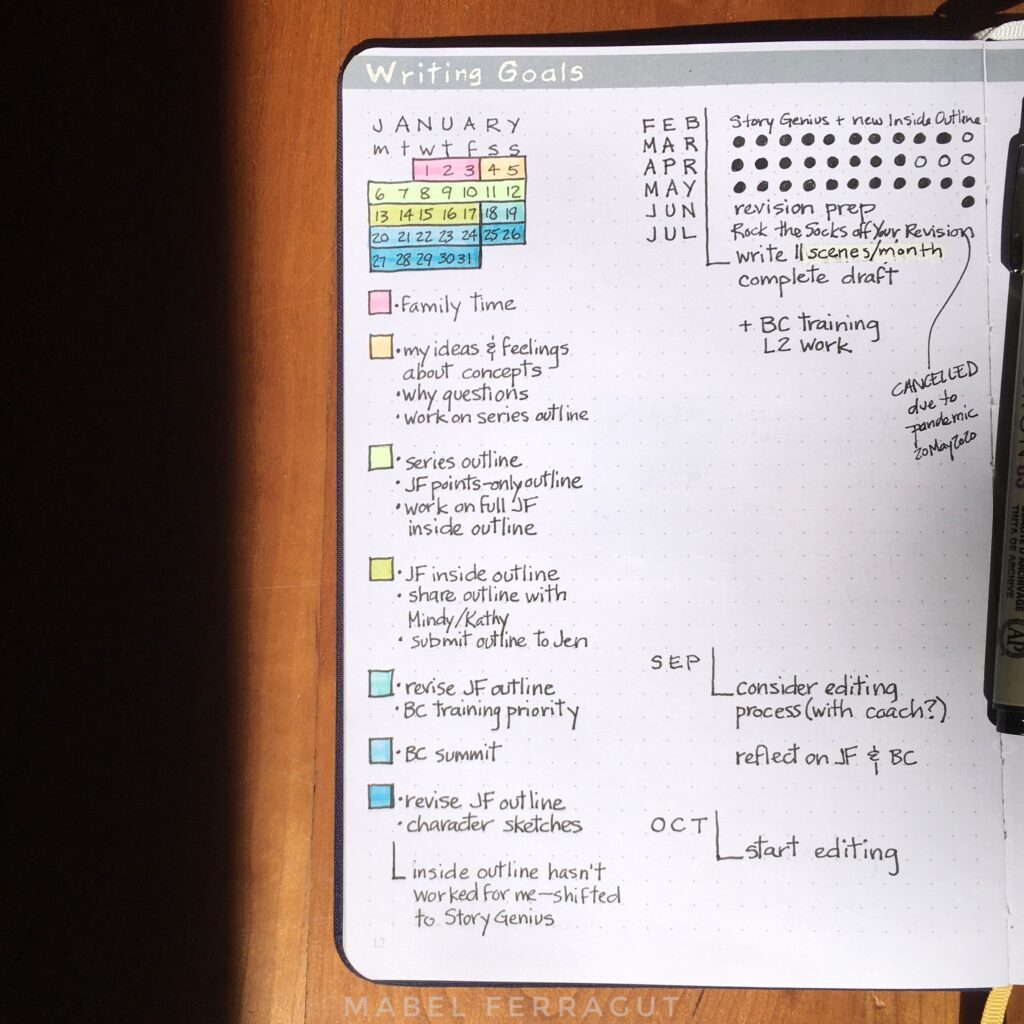
This time I kept to one page and focused on my goals. I devoted half the page to January, trying to navigate my way through a frustrating developmental edit. Then in February, I hit my stride. Though it’s hard to tell from the spread, March, April and May were focused on re-drafting (the circles next to each month represent the scenes I hoped to complete.)
Flexible
Jul – Dec 2020

With this spread, I finally created a flexible planning space that works for me. It’s very simple: I made a box for each month, but only inked plans for one month at a time. Here you see what it looks like after six months of using it.
Current
Jul – Dec 2021
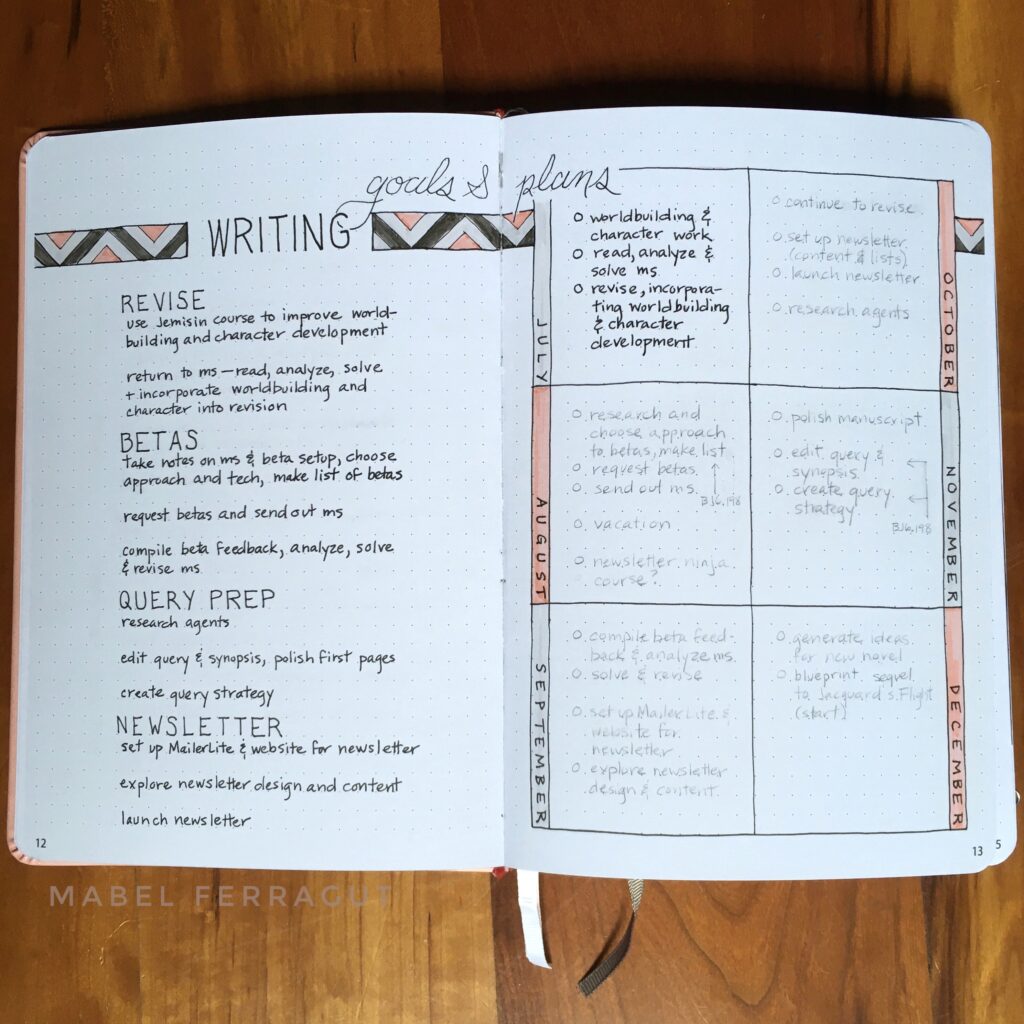
This is my current writing spread. I’ve expanded to two pages so I can see my goals as I’m planning my months. The method of using one box per month has continued to work, so I’m sticking with it.
How I Use This Spread
- On the left, I list my goals for the next six months.
- On the right, I distribute the steps I need to take into the upcoming months—but only in pencil.
- I ink the current month’s goals.
- At the end of July I’ll re-evaluate and adjust August’s goals accordingly. I’ll repeat this process at the end of every month.
I’ve now been using this planning method for a year and a half, and I love it. It allows me to distribute goals and tasks across six months, while also giving me the flexibility to adjust as I go. It seems so simple and obvious to me now that this is what I needed, but I would never have discovered this setup without all the experimenting I did.
This spread may continue to work for me for some time, or it may not. The great thing about bullet journaling is that I get to adjust it however and whenever I want. Do you have a go-to spread to keep track of your writing or other creative endeavors? If so, I’d love to see!
